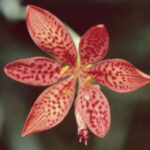Summer is the season that is always associated with cookouts, swimming pools and… gardening. Texas is especially well known for its hot summer days which can be an adventure as decision time arises concerning what plants are hardy enough to stand 101 degree temperatures.
Nobody’s yard has the same ratio of sun, part shade and shade therefore a little knowledge can go a long way at deciding the plants to purchase. Being familiar with the best plants that will take residence in your yard is the key to surviving a Texas summer.
SUN/PART SHADE
Mexican Firebush (Hamelia Patens): A native Mexican shrub, this perennial is very root hardy. Supposedly it has the potential to grow to 13 feet but never has the chance because of Texas Winters. The blooms are, of course, fiery red but it has a slow blooming period in early spring. To prevent this because we Texas gardeners are a bit impatient, new transplants should be at least 12 inches apart.
This plant is wonderful for more drought-like areas. Fertilization should be only conducted every three weeks to keep it continually growing and the plant bed must be well-drained. If you’re looking for a hardy bush without concern for flowers, it can grow well in part shade. However, if you want color then it must be in the full sun.
Rain Lilies (Zephyranthes): Other names for this plant are Fairy Lilies or Zephyr Lilies because they seem to burst into bloom after a rain. They are small and have starry blossoms in a multitude of colors. Native to Guatemala and Mexico these beautiful plants are sturdy enough to stand Texas summers. They are one of the easiest growing bulbs and blend well in any garden bed. Poke their bulbs here and there and then forget about them. They are tough, inexpensive and even keep their bloom in late summer.
These lilies need soil that drains well and will not have any standing after a good rain. They do well in raised beds. Plant them 2″ deep and3″-4″ apart but plant them immediately after purchasing them. The bulbs don’t handle being out of soil for long periods. After planting, soak them generously. The blooms are fine for being cut into bouquets. They will come back with more blossoms. At the end of their season, don’t cut back because the leaves will collect sun and prepare the next year’s blooming. Water only as need and remove leaves when they yellow.
In colder areas, and yes, parts of Texas do have cold winters, dig up the bulbs after the first frost and let air dry for several days. Then store in a paper bag or box covered with peat moss and leave in cool area.
Rock Rose (Halimium, Helianthemum and Cistus Cistaceae): The Rock Rose is a flowering, lightly aromatic shrub that is usually grown as an ornamental. They are tolerant to low water conditions and poor soil so this plant is perfect for Texas’ hot summers. All three types of these species have long, hairy leaves, long branching stems and bright flowers. They can be grown low to the ground or upright and bushy much like a traditional rose bush. They recover quickly from fires and can tolerate the salt from ocean spray. Hence the reason why rock roses are one of Texas’ favorite summer plants! They need direct sun and will grow successfully in that neglected part of the garden or yard where nothing else will grow.
Texas Sage (Salvia coccinea): Also called Blood or Scarlet Sage, this is also another Mexican native. Its tubular-shaped red flowers are a beacon for hummingbirds and are grown widely as an ornamental. This one is frost sensitive and usually grown as an annual. It has been known to bloom as early as February in warmer areas of Texas and grows best in direct sun and well drained soil. Besides red, other varieties are coral and white in color.
SHADE/PART SHADE
Cast Iron Plants (Aspidistra elatior): This rhizomatous perennial is native to Japan and can tolerate abuse and neglect. It is widely cultivated as a houseplant but can live nicely in pots on porches and in front of entrances. It stands about 1 meter high with dark green leaves. In the spring, it may have purplish flowers around its base. The Aspidistra handles low light well, low humidity, rise and fall of temperatures and irregular watering.
It thrives best in complete shade to avoid leaf bleaching and needs good drainage. Even though this plant isn’t too bothered by insects, mites and scale insects could cause problems.
Southern Wood fern (Dryopteris ludoviciana): This fern is native to the Southern United States from Florida to Texas and as far north as North Carolina. It is deciduous in milder climates (evergreen in warmer ones), dies back in the winter and comes back in the spring. This fern grows straight up with small dark green leaves on its fronds which can grow up to 48″ tall and 12″ wide.
Although it will tolerate dryer areas of Texas this plant does much better in moist area such as East Texas and perhaps Southeast such as the Houston/Galveston area.
This is a hardy but not fast growing plants as its rate is considered slow to moderate.
HARDY/INVASIVE
Dwarf Ruellia (Ruellia Brittoniana): This is also called the Mexican Petunia (the flowers are similar to petunias hence the name) and is raised as an ornamental plant in countries such as Mexico, Brazil, Paraguay and Argentina. This little plant is tough and drought-resistant that blooms for a long time. It is considered an herbaceous perennial (evergreen) and is often found as a border or in the back of garden beds as low lying color.
The Ruellia can grow in almost any soil, clay or sand and tolerates wet and dry conditions. Its leaves are a dark green with fleshy stems. The dwarf variety can be kept as 8-10 inches.
Obedient Plant (Physostegia virginiana): This tall plant that blooms in pink, light purple or white is also called the ‘False Dragonhead. The Obedient is herbaceous perennial and can grow up to 4 feet tall. The flowers can swivel right or left on the stem, giving rise to the common name. They bloom in late July to October. Plants spread by way of rhizomes forming large spreading colonies, especially in moisture retentive soils. They must have consistently moist soil and not allowed to dry out. This plant is very invasive however but it may take years to dig up the roots if you no longer desire this flower in your garden. But the invasiveness can be kept in check if you divide them out every two years. They attract bees so make certain that they aren’t planted near a front porch or around those who are bee-sensitive.
References:
Easytogrowbulbs.com
Texas Co-op Magazine
Neil Sperry’s Guide to Texas Gardening
Reference:
- Texas Co-op magazine
- Neil Sperry’s Guide to Texas Gardening
- easytogrowbulbs.com


